Zero-shot prompting is an NLP technique in which a language model is tasked with solving a problem without prior examples or specialized training. Instead of learning from fine-tuned datasets, the model relies entirely on the broad knowledge acquired during pretraining across large and diverse corpora.
This capability allows the model to respond to novel queries with contextual accuracy, even in domains it hasn’t been explicitly exposed to during inference.
Traditionally, machine learning models, especially supervised learning systems, require significant quantities of labeled training data to understand and perform specific tasks. Collecting, cleaning, and annotating this data is resource-intensive and time-consuming. Zero-shot prompting emerges as a solution by leveraging pretrained language models (like GPT-3 or GPT-4) that have absorbed general-purpose knowledge during their training. With a well-crafted prompt alone, these models can be directed to execute a wide range of tasks, eliminating the need for task-specific datasets or additional training steps.
Core Concepts
Prompting
Prompting refers to instructing a language model to carry out a task by phrasing the task as a natural language query or command.
In zero-shot prompting, the prompt must be precise and descriptive enough for the model to infer what is required, without the help of illustrative examples. The quality of the output is directly linked to the clarity of the prompt, making prompt design a critical component of this approach.
In-Context Learning
In-context learning underpins zero-shot prompting, where the model draws from the prompt’s immediate context to understand and complete the task.
The model does not update its internal parameters but uses its stored training knowledge to interpret and respond. This allows the model to adapt to new tasks in real-time without retraining or fine-tuning, making zero-shot prompting both dynamic and scalable.
How Zero-Shot Prompting Works?
The workflow for zero-shot prompting is straightforward. A user presents the model with a task-specific instruction or natural language query. No examples or demonstrations are included. The model interprets the request and responds using its internalized understanding of language, logic, and context.
Example:
Prompt:
“Translate the following English sentence to French: ‘Good morning.’”
Model Output:
“Bonjour.”
This simple interaction illustrates how the model applies its latent multilingual knowledge to complete a translation task, even without explicit examples.
Applications of Zero-Shot Prompting
Text Classification
Zero-shot prompting enables text classification into predefined categories (e.g., spam or not spam, positive or negative sentiment) without needing labeled examples. The model interprets instructions like “Label this review as Positive or Negative” and applies logical reasoning to the content.
Machine Translation
With multilingual understanding embedded in its training, a language model can translate between languages, even rare or low-resource language pairs, by following a prompt like “Translate this sentence to German.”
Question Answering
The model can answer general knowledge or commonsense questions, such as “Who wrote Pride and Prejudice?”, relying on facts absorbed during pretraining without requiring access to specific documents or QA datasets.
Summarization
Models can be prompted to “Summarize the following article in one sentence,” using their ability to condense lengthy content and extract main ideas. The model delivers readable and coherent summaries even without fine-tuning on summarization datasets.
Advantages of Zero-Shot Prompting
Data Efficiency
Zero-shot prompting requires no labeled training data, making it ideal for tasks where data collection is impractical or expensive. This enables rapid prototyping and deployment in data-scarce domains.
Flexibility
It supports various tasks using the same underlying model, from language translation and summarization to sentiment analysis. Only the prompt needs to change, making it highly adaptable.
Cost-Effective
By bypassing the need for task-specific fine-tuning, zero-shot prompting reduces computational expenses and development overhead, making it suitable for startups, educators, and researchers with limited resources.
Challenges and Considerations
Accuracy
The model may deliver less accurate results without training examples, especially on tasks requiring deep contextual understanding or domain-specific knowledge. Its reasoning is based on prior patterns, which may not always align with the target task.
Ambiguity
Since no examples are provided, the model’s interpretation depends entirely on how the prompt is worded. Vague or poorly structured prompts can lead to incorrect or off-topic answers.
Complex Tasks
Tasks involving multi-step reasoning, symbolic logic, or niche domain expertise may exceed the model’s zero-shot capabilities, leading to performance drops unless advanced prompting strategies are employed.
Best Practices to Implement Zero-Shot Prompting
Clear Instructions
Always articulate the task in explicit and direct language. Avoid assumptions or slang that might confuse the model.
Contextual Information
Include background or definitions within the prompt to help the model frame its response appropriately.
Iterative Refinement
Test multiple versions of the prompt and refine based on output quality. Prompt engineering is often iterative, and small tweaks can lead to substantial improvements.
Comparison with Other Prompting Techniques
| Prompting Type | Description | Ideal Use Case |
| Zero-Shot | The task is described, but no examples are given | General-purpose Q&A, simple instructions |
| One-Shot | A single example is included | Straightforward pattern-based tasks |
| Few-Shot | Multiple examples (usually 2–5)are provided | More complex reasoning or structured tasks |
Zero-shot prompting is the most agile and lightweight, while few-shot prompting offers greater task specificity and control at the cost of added complexity.
Future Directions
Enhanced Reasoning
Researchers are exploring Chain-of-Thought (CoT) prompting, where models are encouraged to explain their reasoning steps before producing an answer. This enhances logical depth even in zero-shot contexts.
Domain Adaptation
Efforts are underway to tailor zero-shot prompting to specialized domains (like law, medicine, or finance) using domain-specific corpora and prompt templates, without full fine-tuning.
User-Friendly Interfaces
To make prompting more accessible, platforms are developing visual prompt builders, templates, and suggestion engines to help non-technical users design effective prompts with ease.
Zero-shot prompting is a cornerstone of modern NLP, empowering models to tackle many tasks without additional data or training. Its simplicity, versatility, and cost-efficiency make it a powerful tool for developers, researchers, and businesses. As prompting techniques evolve, zero-shot prompting will continue to serve as a critical bridge between AI models and real-world applications, after systems with fewer constraints.

